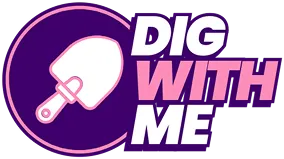Staying connected in 2025 doesn’t have to come with a high price tag. With technology evolving and competition among providers intensifying, affordable internet options are more accessible than ever. From low-cost plans to regional assistance programs, households of all income levels can find reliable ways to stay online without straining their monthly budgets.
Understanding Low-Cost Internet Plans
A plethora of internet service providers (ISPs) offer competitive pricing to attract customers. For instance, some providers promote plans starting as low as $20 per month emphasizing that economical options are accessible to all. Fiber options, such as Verizon Fios starting at $34.99 per month or T-Mobile Fiber at $40 per month with a five-year price guarantee, provide higher speeds for reasonable prices. However, it is crucial to closely monitor introductory offers, typically lasting 12 months, as prices may increase substantially once this period ends. Understanding promotional opportunities, like gift cards or waived fees, can further enhance savings.
Government Programs and Subsidies
Following the discontinuation of the Affordable Connectivity Program (ACP) in 2024, federal and state initiatives have stepped in to fill the gap for low-income households. Programs such as Lifeline offer a $9.25 monthly broadband benefit assisting eligible households in maintaining internet access. Additionally, the AT&T Access program provides ongoing affordable options, even in the absence of ACP support. Many ISPs, including Spectrum, have their own low-income programs, starting as low as $25 per month.
Strategic Cost-Saving Measures
For those seeking to lower their internet bills, adopting practical strategies can be highly beneficial. Bundling services, like combining internet with phone or TV subscriptions, can generate significant monthly savings. Providers often offer discounts for customers using automatic payments, particularly when linked to a credit card earning cash back or rewards indirectly saving on internet costs. Additionally, watching out for data usage can prevent unexpected charges, and negotiating better rates at the end of service commitments can lead to more favorable terms.
Alternative Connectivity Solutions
For areas without fiber or cable, alternative internet solutions offer viable options. DSL and fixed wireless services serve as practical substitutes. For instance, DSL plans from CenturyLink are available, offering speeds suitable for household needs at competitive prices providing flexibility for areas with limited traditional coverage options.
Exploring Regional and Federal Assistance
State-specific programs cater to the unique needs of residents, offering perks such as program discounts for those on the Supplemental Nutrition Assistance Program (SNAP). Individuals should start by checking with current ISPs about available plans and any discounts they might qualify for. Using federal broadband maps also allows users to compare services offered in their regions for informed decision-making. Organizations like Human-I-T continue to be resourceful, offering low-cost internet solutions tailored towards low-income individuals and students.
Why You Should Learn More About Affordable Internet
In today’s interconnected world, affordable internet is not a luxury but a necessity. With various options available, consumers can select plans that fit their budget and requirements. Understanding these options and the benefits they provide—whether through government assistance, provider offers, or strategic financial management—ensures access to essential online resources. Staying informed and exploring new opportunities can aid in securing an affordable and reliable internet service, contributing to a connected and thriving lifestyle in 2025 and beyond.
Sources
Verizon Fios | Fiber-Optic Internet | Plans Start at $35/mo
T‑Mobile Prepaid Introduces New, Perk-Packed Plans Backed by a 5-Year Price Guarantee

